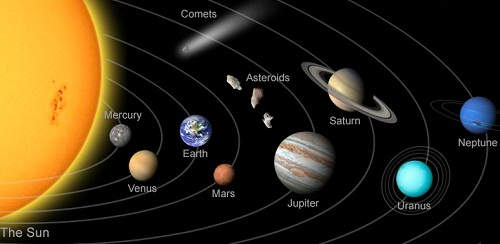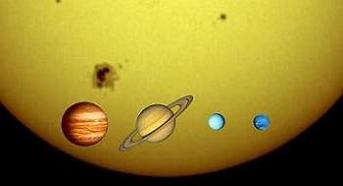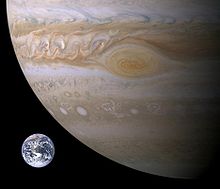
What is Solar System?
The Sun, Planets, Asteroids and other objects in orbits, are together known as the Solar System.
The Sun
The Sun is extremely hot and brightly glowing star of gas. It’s temperature is ranging from 6000oC on the surface to 15,000,000oC in the center. Its energy comes from nuclear reactions deep in its core.

The Planets
The Earth is one of the eight planets in orbit around the Sun. The Planets do not have their on light, but they are visible as they reflect light from the Sun. The Planets are kept in orbit by the gravitational pull of the Sun. In general, the further a Planet is from the Sun, the slower it travels and lower its average surface temperature.
The Inner Planets
Mercury, Venus, Earth and Mars are inner Planets. They are also called “rocky dwarfs”.
Mercury
Mercury is the closest planet to the sun. It has cratered surface but it doesn’t have an atmosphere to trap the heat from the Sun. As a result, the temperature rises to 427oC at noon, and drops down to –173oC at night.
Venus
Venus is the brightest Planet. Venus has the thickest atmosphere (97% Carbondioxide) in the solar system, causes a severe greenhouse effect. The temperature on Venus is 461oC, and it remains same in day and night.
Earth
Eath is the only known Planet where conditions are perfect for life. Its distance from the Sun, and atmosphere makes it perfect for life. The Earth also has a bodyguard, Jupiter, that save it from any collision with the Asteroids.
Mars
Mars is the fourth planet from the Sun in the Solar System. Mars is also called “Red Planet” because of its reddish color because of iron oxide. It has a thin atmosphere, mainly Carbon Dioxide, a dusty surface and polar caps. The rotation of Mars is also tilted like Earth that produces seasons.
The Asteroids
Asteroids are smaller objects than Planets, in orbit around the Sun. Their sizes are ranging from diameter of few kilometers to 1000km. Most Asteroids have orbits between Mars and Jupiter, and thus separates inner Planets from outer ones. Some Asteroids have much more elliptical orbits that cross the path of other Planets. So, there is possibility of collision of Asteroids with other Planets.
The outer Planets
Jupiter, Saturn, Uranus and Neptune are outer Planets. They are also called “Gassy Giants”.
Jupiter
Jupiter is the fifth planet from the Sun in the Solar System. It is largest Planet in the Solar System. It is mainly gas and has no solid surface. Its atmosphere 90% hydrogen. The great spot on Jupiter is a huge storm that is known to have existed for centuries.

Saturn
Saturn is another gassy giant, and second largest Planet in the Solar System. It is surrounded by rings. These are not a solid mass, but millions of pieces of ice and rock.
Uranus
Uranus is another gassy giant. Its axis of rotation is tilted at more than 90 degree. It also has rings, but much fainter than Saturn’s.
Neptune
Neptune is the outermost Planet in the Solar System It is also a gassy giant. It also has a faint ring system.
RELATED PAGES
— Solar System: Key Facts
— Properties of the Planets